TRF Receiver
TRF Receiver. Thanks very much for the interest in what is a fascinating story of the history of broadcast radio.
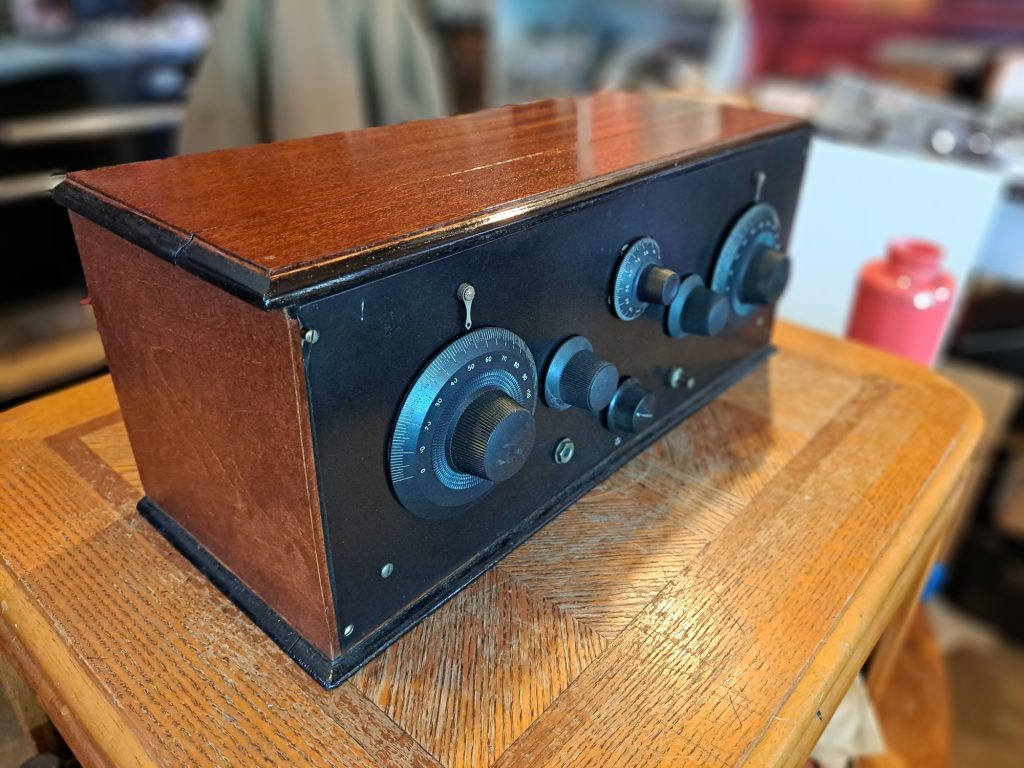
In my first segment we’ll look into the dawn of specifically American broadcast AM radio but to tell the whole story we need to look at the many other contributors and producers who were very similar in the technical development but had some differences in their
business practices.
American broadcast radio was introduced in the very late 1800s. It was designed, among other things, to replace wire telegraphy, which at the time was the go to means of communication.
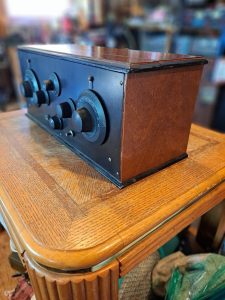
Many individuals contributed to
the development of radio
transmission and reception and
soon our industry had the ability
to manufacture radio receivers
by the millions and by 1920
almost every household in
America had some sort of radio,
By world War 1 many folks had
embarked into the amateur
radio hobby but it all changed
when President Woodrow
Wilson ordered all non
government transmission stations to be disabled and dismantled AND destroyed so that no enemy transmissions could be made to Germany.
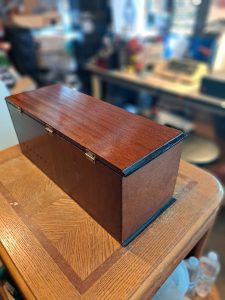
Back to American broadcasting,
the 1st receivers were known
as TRF or Tuned Radio
Frequency typically 3 tube units
that ran off a 6-7 volt lead acid battery which made the radio portable and convenient.
Unfortunately these radios had
less than good reception and
were easily damaged by carrying them around and being exposed to the elements but they did provide world wide reception and were very popular,
When the depression of the late 20’s struck most of the free world, companies adjusted there sales strategies to continue to provide the heavily demanded products.
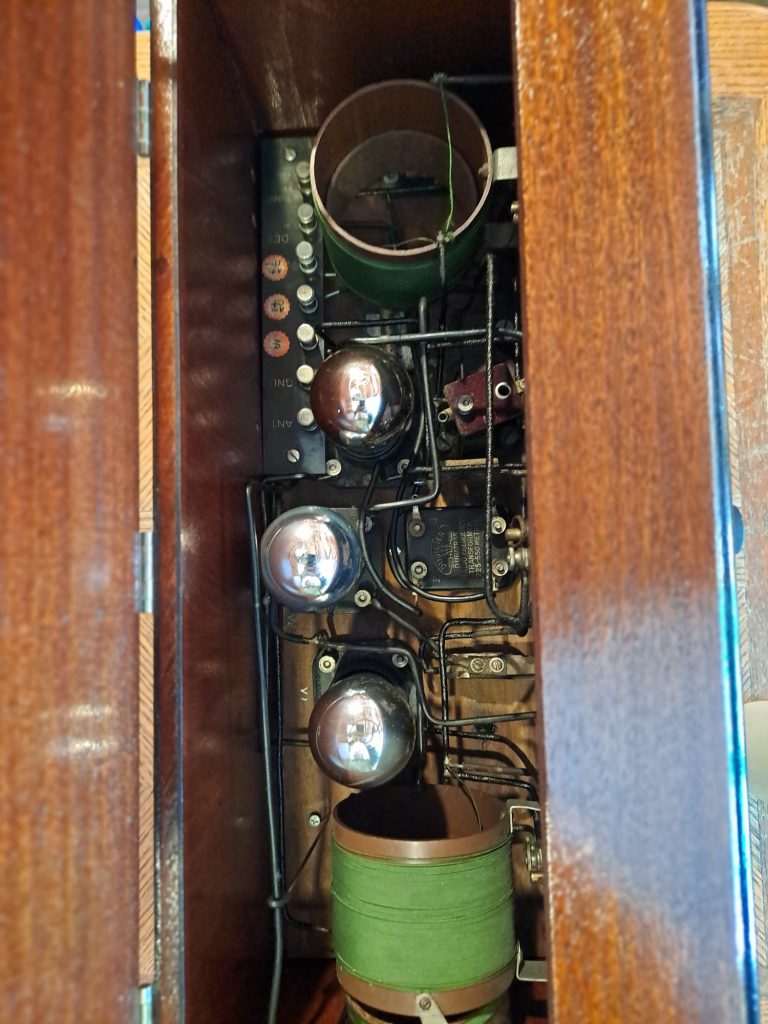
The companies from Japan then evolved into well known names
like Panasonic. They really took a chance but by following the
advice of the senior director let none of the employees leave,
paid them their typical wage while only having them work
half the hours. His plan was to have the assemblers spend
some time as an on the ground sales force to cut the over
stocked inventory down and it work.
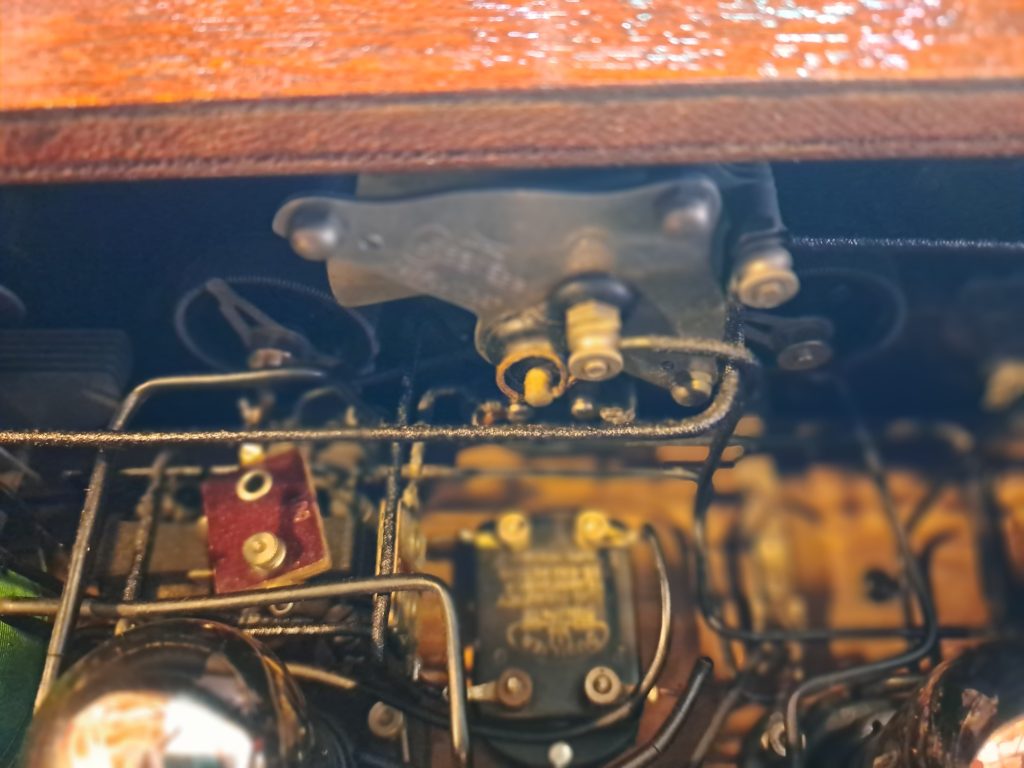
I should also note that during WW1 even as the United States
government required all transmitters to be shut down it
also basically demanded every family have a working receiver
to keep up with public service and civil defense news.
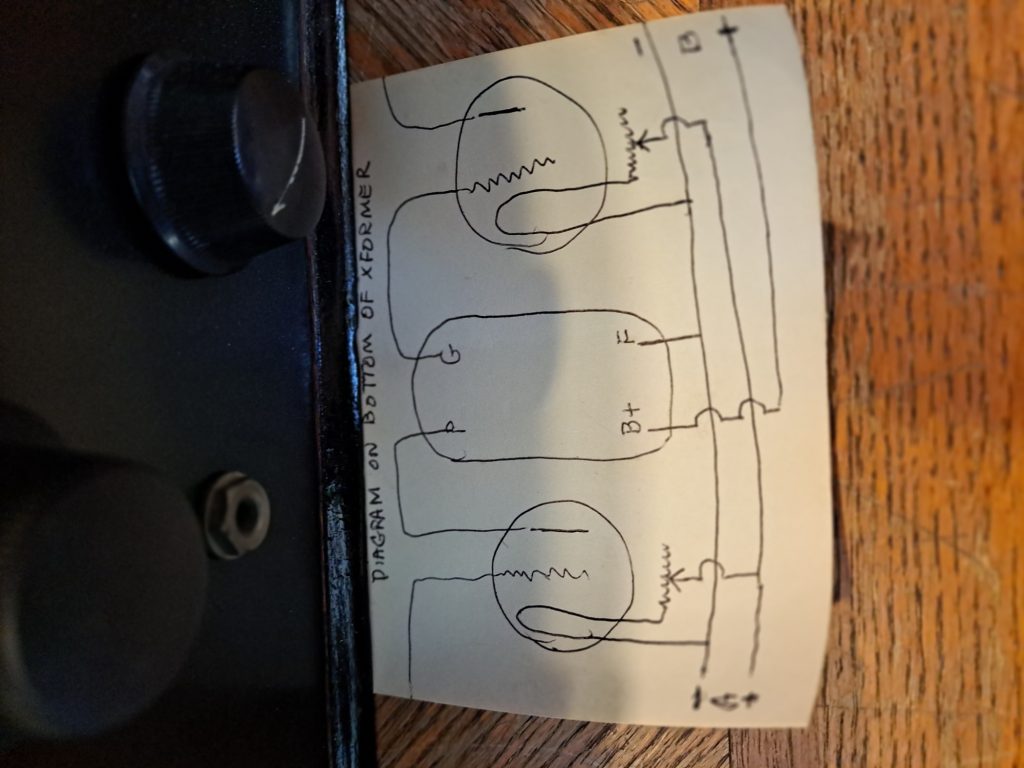
These photos are of a very early pre WW I 3 tube TRF receiver.
Notice the beautiful wood and compact design.
I will be posting more good stuff and thanks again for the
interest.
Jonathan Wixson
KB1COL
Vice President of LRRA
___________________________
Radio broadcasting to the public didn’t get started until the early 1920s. Before that time nearly all radio was 2-way communication.
“TRF stands for “Tuned Radio Frequency.” These receivers were called that since the earliest receivers used for broadcast reception were detectors, usually regenerative, sometimes but not always followed by one or two stages of audio amplification.
The TRF sets of the period added one or more (usually 2) tuned-radio frequency amplifiers ahead of the detector which was usually non-regenerative. All of these stages, plus the detector, were tuned to the frequency of the desired station.
The most common configuration was 2 stages of TRF amplification, the detector, and 2 stages of transformer-coupled audio amplification. This resulted in 3 dials to tune, as back in those early days, the technology hadn’t progressed to ganged capacitors with one tuning shaft/control requiring proper tracking of all the tuned circuits. Hence today we sometimes refer to them as “3-dialers.”
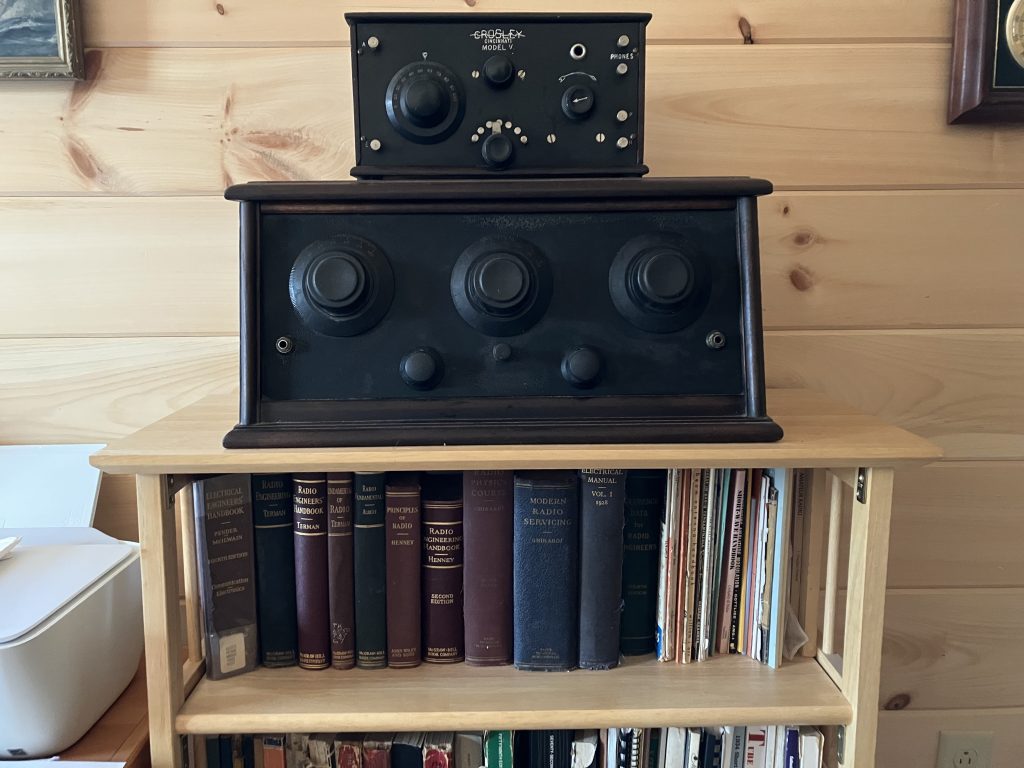
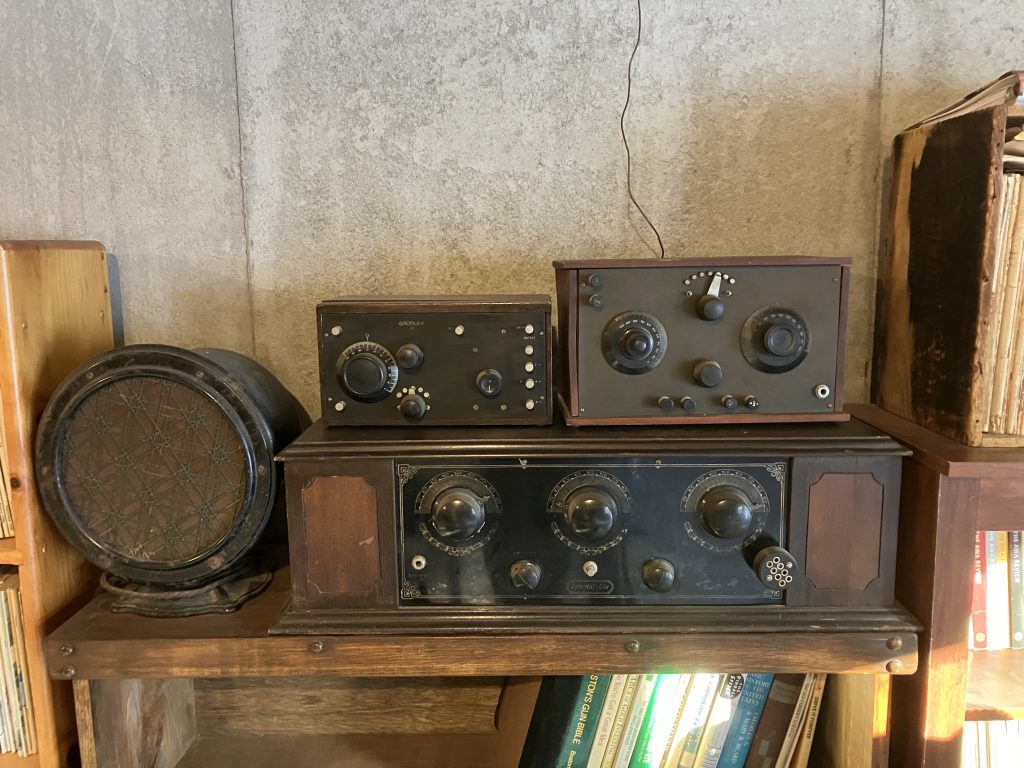
Before the TRF sets, regenerative detectors were common (see below). I have a Crosley V and Crosley 51 in my collection. The V is a one-tube regenerative set, and the 51 is basically the same radio with a stage of audio added, hence 2 tubes. Like all the consumer radios of the 1920s, they cover the AM broadcast band only.
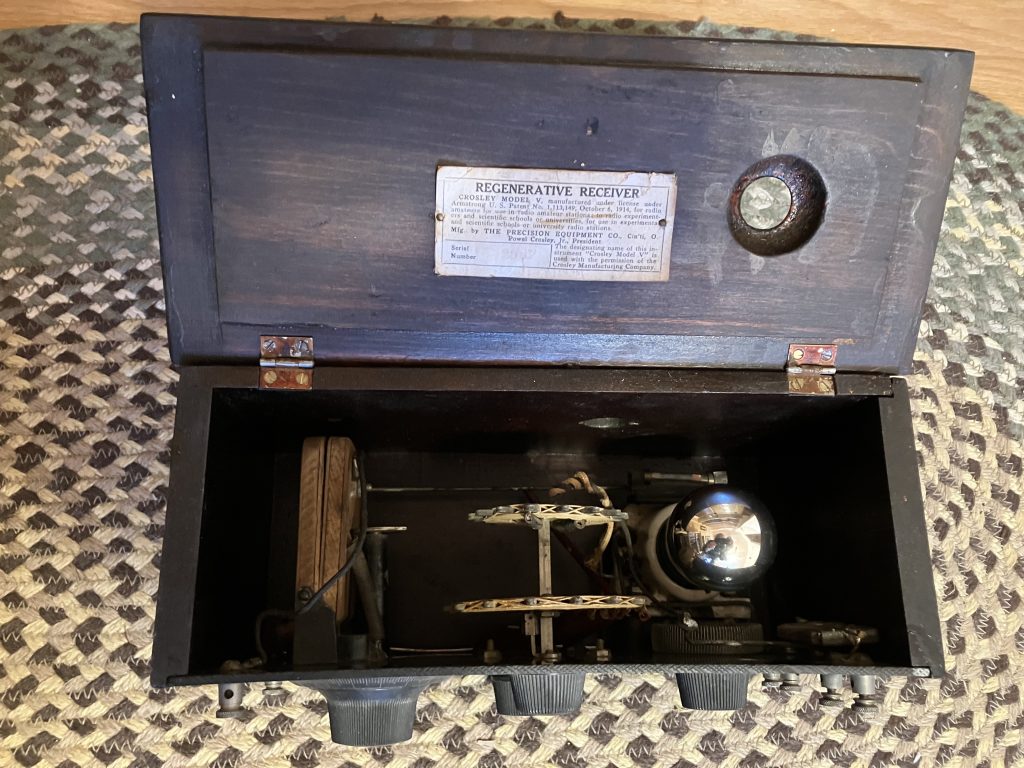
Crystal sets were also in use by those who couldn’t afford the more expensive tube radios. All the radios pictured are from the early-mid 1920s, and were battery-operated since sets running off the mains didn’t really get going until the latter part of the decade.
Larry Szendrei
NE1S
Member of LRRA
